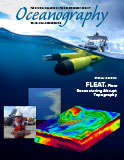Article Abstract
Over the last decade, the Pacific island nation of Palau, situated at 7°N, has had a number of close encounters with Category 4 and 5 typhoons, including the named storms Bopha, Haiyan, and Lan in 2012, 2013, and 2017, respectively. Although historically, due to its low latitude location, typhoon activity has been rare in Palau, it was in the direct path of typhoons Bopha and Haiyan, which caused extensive wind damage, reef destruction, and wave-driven inundation across the island group. Typhoon Lan formed and stalled northwest of the main island group, generating large swell that damaged the coral communities on the western barrier reefs of Palau. Wave gauges deployed in water depths of 9–17 m around the island group captured strong gradients in the surface wave field during each typhoon. Significant wave height measured by the pressure gauges varied by as much as 5 m, highlighting the importance of coastline and reef geometry in wave transformation and shadowing. WAVEWATCH III model hindcasts are used to interpret the observed gradients in the data sets, characterize the offshore incident wave direction during the storms, and describe shadowing of swell by the island chain. Coral damage that occurred during the storms is linked to the relative orientation of the coastline and the dominant swell wave direction. This study establishes a framework for identifying vulnerable coastline areas that may benefit Palau’s preparedness efforts and informs resolution requirements for applying regional wave models to support risk assessments at islands with complex shorelines and steep bathymetry.

